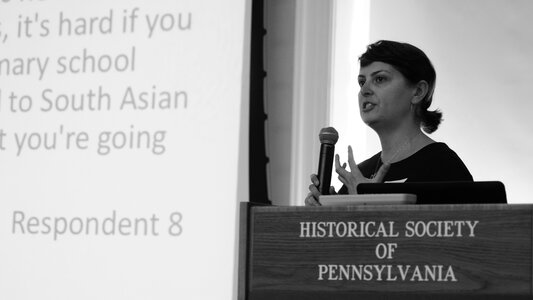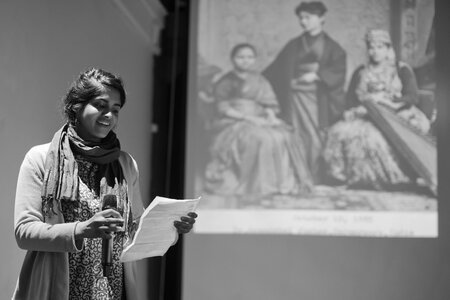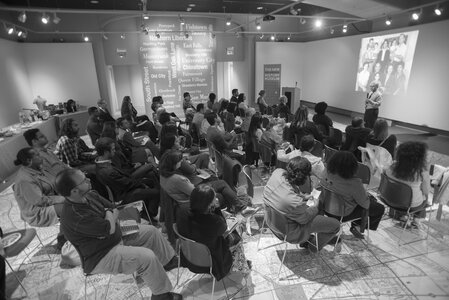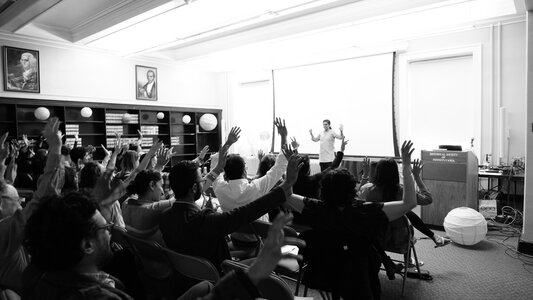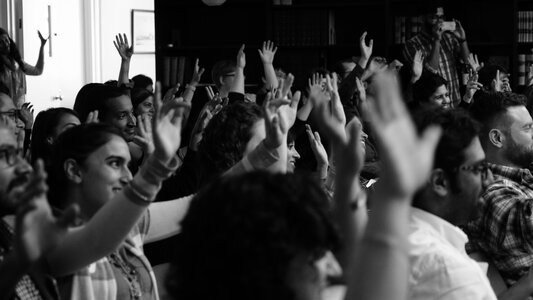Digital Memory Work: Bottom-Up Approaches
Remembering is usually confined to certain spatial and temporal contexts. Digital memory work overcomes these limitations and creates new, virtual spaces to share facts, stories and views. Three projects, that emerged from Mandela Dialogues on Memory Work 2 set example of its potential.
What makes digital memory work different from conventional forms of remembering, such as museums, memorial sites, lectures or guided tours? First and foremost, web-based forms of memory work – such as digital archives, blogs or even social media – have the great advantage of being accessible worldwide and any time. Hence, they especially lend themselves to decentralised, bottom-up perspectives and to comparing views and experiences across time and space. Plus, they are very versatile: Digital solutions integrate a whole lot of different media such as historical documents, maps, pictures as well as video and audio data and can easily be augmented or commented. Such platforms can bring together a widespread network of stakeholders and researchers, facilitate participatory engagement and have the potential to decentralise knowledge and history.
But they also bring about a set of challenges: On the one hand, the unlimited availability of the information poses questions of privacy and data protection as pictures and personal accounts like video interviews might get purloined and used for adverse purposes such as online hate speech. Like in more conventional practices of memory work, digital archives must tackle the question of representation, but have different options to deal with it, as they often adopt a grassroots approach. On the other hand, there is the issue of technical feasibility, that may pose some huge obstacles.
“Ethical concerns must be taken with the utmost seriousness and addressed carefully before any project is pursued further. We are very concerned not to harm the communities by exposing them to further surveillance.”
Michelle Caswell
Virtual Safe Spaces: From Draft to Realisation
At the Mandela Dialogues on Memory Work 2, participants worked on ideas to create safe spaces across generations to remember past conflict and violence and overcome hatred and trauma. In this context, three participants developed proposals for digital memory work projects – two focusing on videos and interviews, one focusing on historical documents and analyses. After they have been granted seed-funding, the participants started getting from theory to practice. Some two years into that process, we talked with them about their approaches and progress.
Michelle Caswell
Michelle Caswell: “Documenting South Asian American Experiences of Islamophobia”
Michelle is not only an Associate Professor of Archival Studies in the Department of Information Studies at the University of California, Los Angeles, and an affiliated faculty member with the Department of Asian American Studies, but also the lead organizer of the Archivists Against Collective. Therefore, she is already very familiar with the perspectives of the respective communities as well as an expert on the potential of archives and their social impact. Her project, a documentation of the South Asian American Experiences of Islamophobia, is situated within the framework of the South Asian American Digital Archive (SAADA), an independent, nonprofit, community-based organization that she co-founded.
For Michelle, it was crucial to shape the concept carefully, because the project aims at publishing “stories from a community that is particularly targeted in the political climate in the U.S. In the worst-case scenario, personal experiences made publicly available could in turn be used to go after community members during a time when they are particularly vulnerable to state persecution.” Therefore, Michelle decided to use the seed funding to put together a board of advisers, drawing on a supportive network of researchers, activists and artists from the South Asian American community. Questions discussed with the board include the appropriacy of Islamophobia as an umbrella term, possible audiences, and the groups and topics that should be included in such a documentation. Based on the discussion and feedback, the project idea was refined, taking into account the recommendations while avoiding the ethical pitfalls. The following steps were defined: “For the next stage of this project we plan to video-record South Asian American community leaders sharing their reflections and stories of archival materials related to the long history of Islamophobia. We have asked our advisory group members to record their own stories as the final stage of this planning project. Several of these videos have been submitted and we are currently formulating a plan for moving forwarding and expanding the project.”
Ivana Stankovic
Ivana Stankovic: “Factories revisited – A digital archive on the position of Bosnian factories in the social memory”
“As sites of everyday life as well as productivity, factories represent economic and social development in post-Yugoslavian countries. In Bosnia and Herzegovina, there is even one more dimension to them, as they were turned into military facilities during the war period and subsequently became sites of post-war economic decline.” Against this backdrop, Ivana and her team worked out a concept to document the social history of industrial plants in her home country Bosnia and Herzegovina. It aimes at mapping the sites and gathering information about their history to provide a digital basis for future research. As an independent memory work professional, Ivana didn’t have access to existing infrastructure and set out to create the archive from scratch. Together with her team, she started by collecting material: evidence from the “golden age”, documenting initialization, employment numbers, products as well as leaflets and annual financial reports, but also data about the war period, privatization and the present condition. Plus, she developed an interview methodology and conducted ten initial interviews with former workers. Ivana regards these sources as a pillar of the whole project: “Some of the greatest supporters throughout the process most definitely were our interviewees who gladly opened their homes and personal archives to us, helping us not only by providing much needed information and material, but also by putting us in touch with other informants.”
However, Ivana’s project suffered a set-back, because the arms factory in Konjic she was planning to document was taken over by the Ministry of the Interior and access as well research was denied. This led Ivana and her team to readjust their focus on gendered memory and to zoom in on the so-called “factory of women” in another town. Another major challenge was even more difficult to overcome: building an online platform for the documentation. Ivana reached out to colleagues working on digital archives, but their technical solutions turned out to be inadequate for the purpose – among other things because they weren’t supporting the Bosnian alphabet.
Technical feasibility continues to be a major issue that delays the publication of the platform. At present, a beta version is being tested – so hopefully, the social history of Bosnian factories will soon see the light of the digital day.
Vesna Teršelič
Vesna Teršelič: “Faces of Resistance”
Since the mid-1980s, Vesna is part of the peace movement in Yugoslavia and in the post-Yugoslav societies. As the founder and former director of Documenta – Center for dealing with the past, she is an experienced and well-known networker and very well connected to other activists working in the field of resistance and memory work. So it comes as no surprise that with her digital memory work project, she adopted a comparative, international approach: „The goal of the internet platform „Faces of Resistance” is to make resistance more visible through publishing personal memories of resisters in order to simultaneously recognize and redress the harms suffered by victims, foster trust and reconciliation, and thus contribute to preventing the repetition of violations or abuses in the future.“ The platform is meant to be a virtual museum. The video interviews it features tell stories about diverse forms of resistance in different social conditions, time periods and countries. Therefor, the team had to define the meaning of resistance as an umbrella term and to come to terms with the question of representation: “Recognizing the fact that the definition of resistance avoids any uniqueness, through the memories of people whose experience of resistance we present in this collection we have tried to cover a wide range of resistance experiences.” Launched 2017, the platform impressively demonstrates the potential of combining diverse information such as interactive maps, biographical data and careful translations of the interviews to create a comprehensive picture. To raise public awareness and to broaden its educational impact, it is embedded in a comprehensive program including a travelling exhibition, a summer school, an international work camp, and a series of workshops. So far, the platform has had 2370 visitors. Far from resting on this success, Vesna regards the platform as work in progress: “We hope to develop our platform further with colleagues from organizations and institutions in Columbia and Russia who have already expressed their interest.” Fueled by Vesna’s passionate commitment, the project gathered considerable momentum and continues to unfold – a new hub for international memory work on resistance across space and time has emerged.
“To enable the use of our platform in the classroom to address the topic of resistance, it would be very helpful to involve elementary and high school teachers in developing dedicated education tools.”
Vesna Teršelič
Contributing to the global goals




